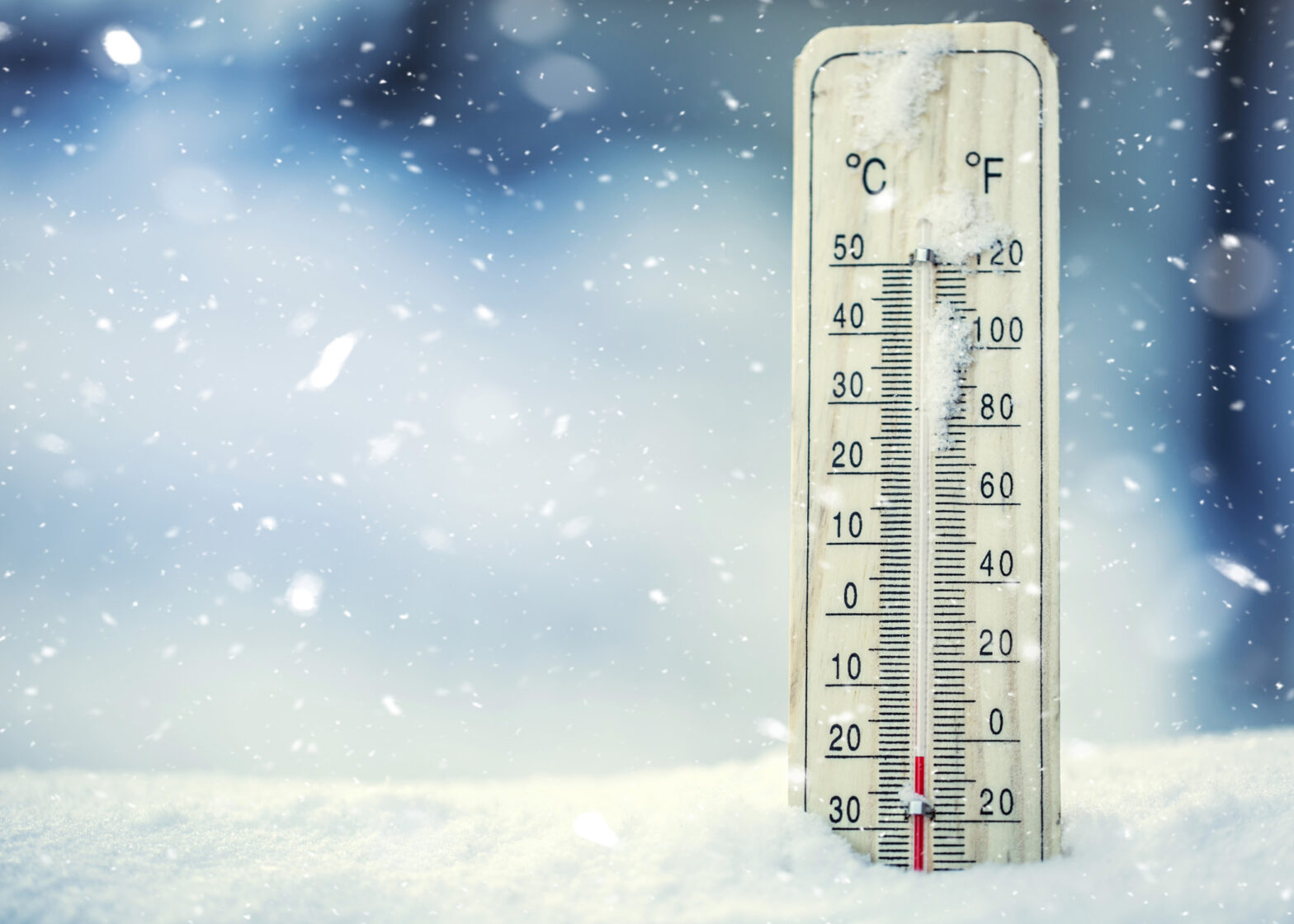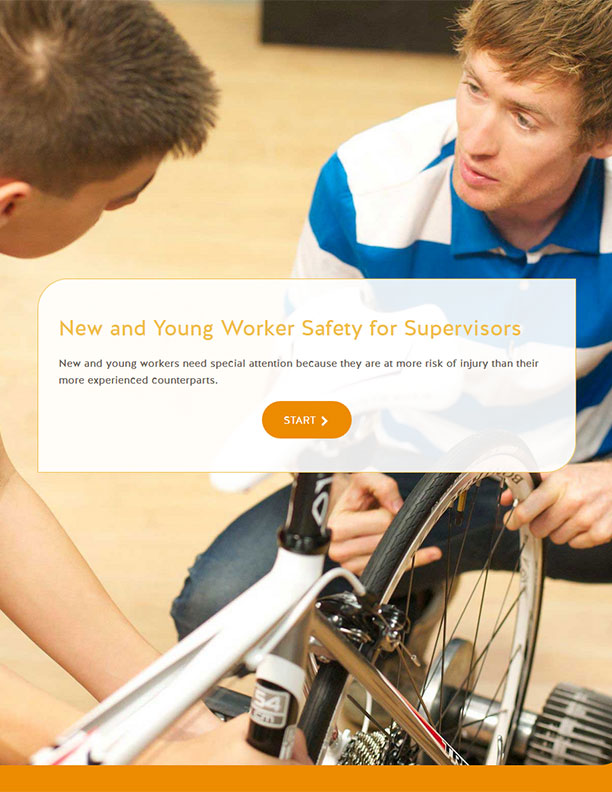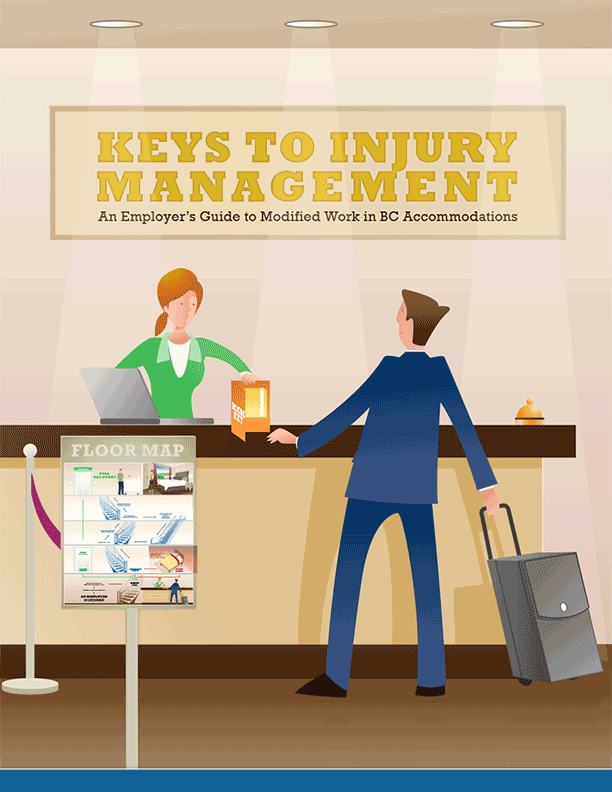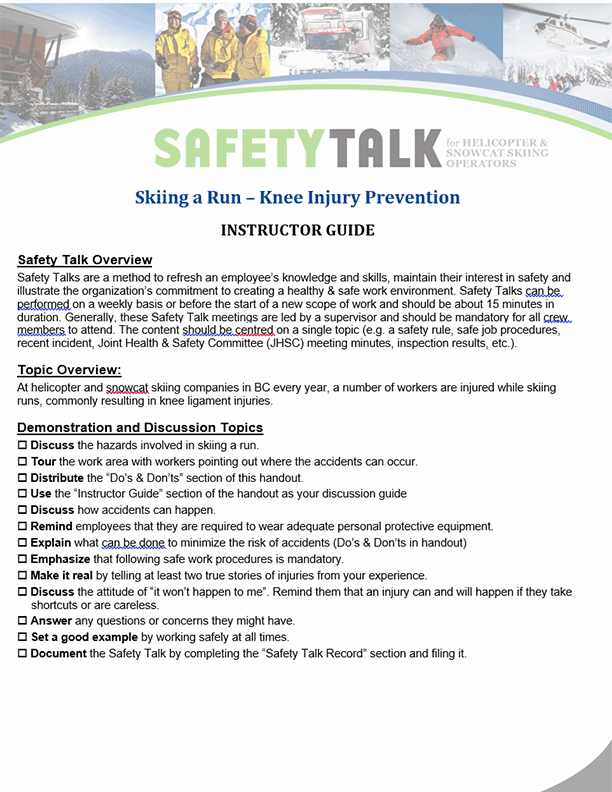January 27, 2025
While providing exceptional experiences for guests is a top priority in BC’s tourism and hospitality industry, ensuring the safety and well-being of our teams is equally crucial.
If your workers are exposed to cold temperatures, it’s essential to understand the risks, especially when it comes to musculoskeletal injuries (MSI). Cold weather can make muscles and soft tissues less flexible, which can lead to strain and injury. Those working in stationary positions with an ambient air temperature of less than 16 degrees C are more susceptible.
Risk Identification: Working in cold temperatures can cause arteries to narrow and reduce the flexibility and efficiency of muscles and soft tissues. This can lead to increased forceful gripping and higher risks of MSI. Workers who may be exposed to cold temperatures include:
- Ski instructors, lift operators, and maintenance workers based outdoors
- Staff maintaining outdoor amenities, exposure to cold water or performing snow removal
- Staff working in outdoor patios or pop-up restaurants
- Workers in refrigerated food storage or freezer sections in kitchen environments without appropriate clothing
Risk Assessment and Controls: Employers are required to control the risk of MSI to workers. Follow the hierarchy of controls:
- Elimination: Schedule outdoor work in milder weather and minimize exposure to drafts by directing airflow away from workers
- Engineering Controls: Provide tools that reduce strain, vibration, and awkward postures; offer portable heaters if needed
- Administrative Controls: Rotate workers between warm and cold tasks, provide rest breaks, hot drinks, and warming stations, store metal tools in a warm place, and educate workers on cold exposure and MSI
- PPE: Ensure workers have well-fitting gloves and appropriate clothing for warmth, encourage workers to layer
Here are some resources to get you started on protecting your team:
Resources
WorkSafeBC – MSI Prevention Guidance: Cold Temperature
CCOHS – Cold Environments – Health Effects and First Aid
CCOHS – Climate Change: Extreme Weather – Cold
CCOHS – Cold Environments – Working in the Cold
WorkSafeBC – Cold Weather News Release
WorkSafeBC – OHS Regulation Part 7, Division 4, Part 7.33-7.38 Cold Exposure
go2HR – Preventing Cold Stress Safety Talk (Heli Cat)
go2HR – Preventing Cold Stress Safety Talk (Ski Areas)
Posters
CCOHS – Working in the Cold Infographic
Return to top


